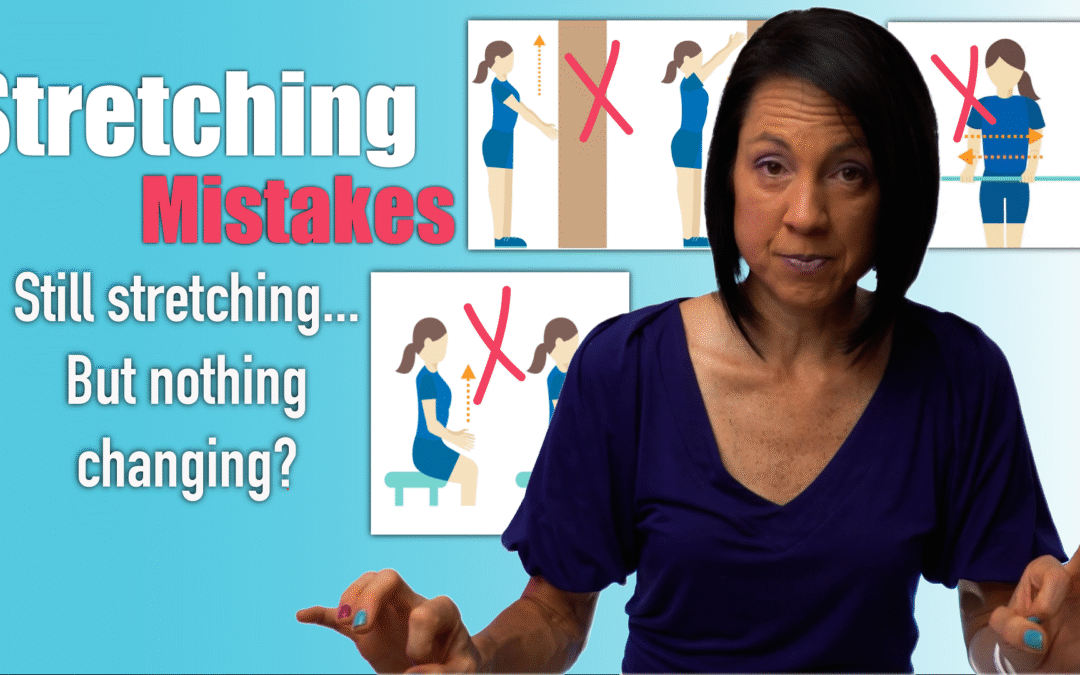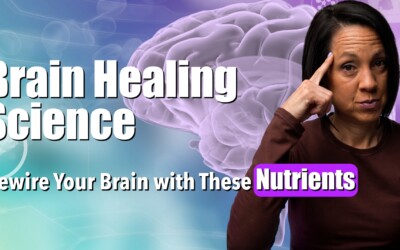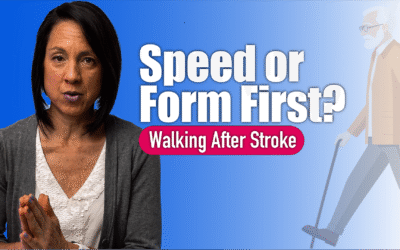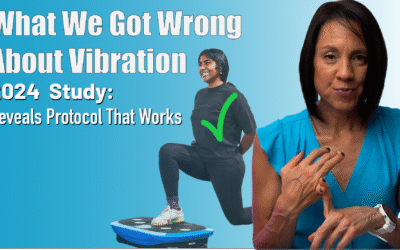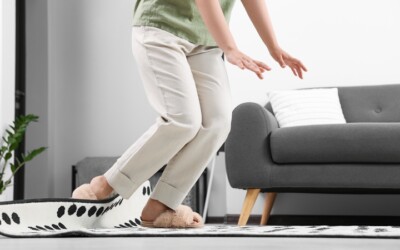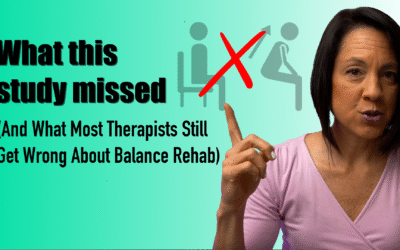8 Common Stretching Mistakes in Stroke Recovery
Why Your Stretching Might Be Making Spasticity Worse
If you’re dealing with spasticity after a neurologic injury, stretching might not be as straightforward as it seems. In fact, doing it the wrong way can increase resistance, worsen symptoms, and set your progress back.
Spasticity vs. Tightness: Know the Difference
One of the most common misconceptions is treating spasticity like muscle tightness. Spasticity is an involuntary muscle contraction due to a loss of connection with parts of the brain that help to inhibit overactive movements. While a tight muscle simply needs lengthening, a spastic muscle resists lengthening and often contracts more with speed or stimulation. That’s why standard stretching techniques don’t always work.
The 8 Stretching Mistakes to Avoid
- Prolonged Holds Without Movement
Long static holds may help tight muscles but not spastic ones. Instead, incorporate slow, rhythmic movements to help desensitize the muscle. - Stretching Too Fast
Spasticity is velocity-dependent, which means the faster you stretch, the worse it gets. Go slow, always. - Only Stretching Once a Day
Even 30 minutes of stretching isn’t enough if the muscle contracts involuntarily the rest of the day. Wearing a properly fitted splint can help maintain gains. Most off-the-shelf splints aren’t strong enough to resist spastic contractions. Use one designed for neurologic conditions, or you can order our Rehab HQ hand brace. - Stretching in the Wrong Position
Stretching in unsupported or upright positions may trigger more resistance. Support the arm or lie down to reduce stimulation. - High-Stimulation Environments
Noisy, bright, or stressful environments increase spasticity. Do your stretching in a calm, quiet, low-stimulation space. - Lack of Active Engagement
Combine passive stretches with active-assisted or antagonist muscle activation to promote balance and relaxation. - Skipping Weight-Bearing Stretches
Weight-bearing (e.g., standing calf stretches or resting your forearm on a table) can reduce spasticity more effectively than sitting. - Engage Your Brain
Don’t mentally check out. Engaging your brain during stretching by mentally focusing on relaxing the muscle can help with inhibition and improve results over time.
Final Thoughts
Stretching spastic muscles requires more than just time and effort, it demands the right strategy. By avoiding these common mistakes and using techniques tailored for spasticity, you can reduce resistance, improve muscle control, and make your stretching routine more effective.
Consistency, proper positioning, and staying mentally engaged are key. With the right tools and guidance, you can take meaningful steps toward better mobility and recovery.
Tools to Supercharge Your Recovery
Want a comprehensive rehab plan without bouncing between therapists or feeling lost?
Our Gold Membership Program includes:
- Ad free videos and handouts
-
Full access to 350+ home rehab exercise videos
-
Monthly Q&A sessions and webinars
-
A private discussion board I check daily
👉 Learn more at Rehab HQ
📞 Or schedule a discovery call to find out if it’s right for you.
🖐 Rehab HQ Hand Brace Ordering Form
🟦 ShoulderFlex (Blue Shoulder Stretching Tool)
Articles you may be interested in
Best Foods for Brain Healing and Mental Clarity
Brain Recovery Nutrition How Diet Fuels Healing and Focus https://youtu.be/P5UJMJJRVdw When it comes to stroke recovery, exercise and rehab often take the spotlight. But what if the foods you eat and the nutrients inside them could also play a powerful role in healing...
Is Your Neuro Rehab Helping Your Recovery, or Making Things Worse?
The Real Impact of Neuro Rehab on Recovery https://youtu.be/YDgQc4p_atE Recovering after a stroke often involves long hours of rehabilitation. Neuro rehab programs are designed to retrain the brain and body, helping survivors regain independence. Understanding...
How Short Bursts of Exercise Boost Brain Healing
HIIT for Stroke Recovery Boost brain rewiring, improve movement, and speed recovery with short bursts of exercise. https://youtu.be/4SgXN2uRX8g If you’ve been on your stroke recovery journey for a while, you’ve probably heard the word neuroplasticity. Neuroplasticity...
New Study: Vibration Plates Boost Balance After Stroke
It Just Vibrates… So Why Are Stroke Survivors Getting Better? The Truth Behind the Research https://youtu.be/GZgGsMjEgJQ When vibration plates first became popular, they reminded many of us of those old 1980s machines that promised to "shake" the fat away. Naturally,...
Walking “Tips” that Sabotage Post-Stroke Progress
Recovering from Stroke? Don’t Let These 7 Walking Mistakes Set You Back Better Walking Starts by Avoiding These Mistakes https://youtu.be/_nkjHLdOeLc Recovering your walking ability after a stroke is an incredible accomplishment. You’ve put in the work. Strengthening...
The Hidden Reason Your Walking Feels Off After Stroke Rehab
The Missing Link in Stroke Rehab: Why Strength Isn’t Enough How Plyometric Exercises Can Improve Your Post-Stroke Walking https://youtu.be/0xzcgTifCiM Recovering from a stroke is a journey that takes patience, effort, and persistence. Maybe you’ve been faithfully...
Struggling with Shoulder Pain After a Stroke? Here’s What Works
Why Does My Shoulder Hurt After a Stroke?Understanding the 6 Most Common Causes and What You Can Actually Do About Them Let’s be real — if you’re recovering from a stroke and your shoulder still hurts, it can feel really defeating. Especially if you’ve been doing “all...
Still Feeling Weak After Stroke? This Might Be Why
Doing the exercises… but still not getting stronger?You’re walking. You’re moving. Maybe even getting stronger.But everything still feels hard. Like walking across a room takes full concentration. Or standing up while talking feels like solving rocket science....
Stroke Recovery: Spasticity vs. Adaptive Shortening vs. Contracture
Stroke Recovery: Spasticity vs. Adaptive Shortening vs. Contracture Muscle tightness after stroke is common and can be the greatest barrier to restoring normal arm and leg movement. But not all tightness is the same. To treat it effectively, you need to understand...
Why Eccentric Control Might Be the Missing Link in Your Stroke Recovery
Why Eccentric Control Might Be the Missing Link in Your Stroke Recovery After a stroke, movement rarely returns the way we’d like. Instead of smooth, controlled motion, you get stiffness... or those annoying synergy patterns—where every muscle seems to fire at once....

